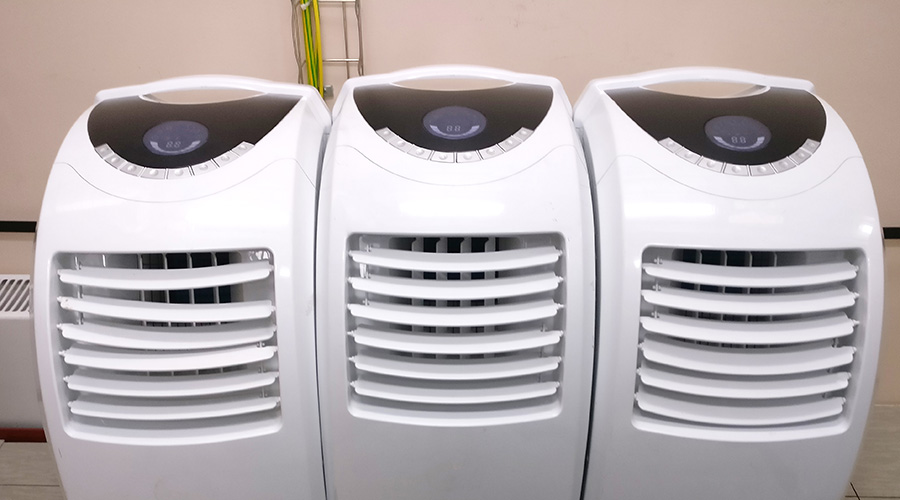HVAC Equipment: The Inventory-Performance Link
Long-term, energy-efficient operation depends on a reliable supply of replacement parts
The new HVAC system installation, major renovation, or building addition is complete. The installation, training and testing have gone smoothly, and the equipment is operational. Now is the time to kick back and accept congratulations for a job well done, right?
Well, sort of. But the job isn’t done.
In many cases, the arrival of new HVAC equipment and components — as well as new facilities — means maintenance and engineering managers must carefully evaluate technicians’ need for spare parts and, most likely, add the required new parts to inventory.
One important and too-often-overlooked challenge for managers in such cases is updating a department’s inventory-management system to reflect the new equipment and components.
Inventory Issues
Managers can divide inventory requirements for the new systems into two categories: consumables and spare parts. The operation and maintenance manual for each equipment item included in the upgrade or addition contains a list of these recommended spares.
Consumables — including lubricants, filters, packing, and sealants — must be the first consideration because technicians undoubtedly will need these items first.
The manual describes lubricant specifications, application amount and application frequency. Lubricant characteristics can vary substantially, and incompatible substitutes can severely damage equipment. So technicians must be careful to ensure a good match.
They might be tempted to use a lubricant already on hand for other applications to prevent an unnecessary increase in the number and types of lubricants that are in stock, given their high cost. But this step is only economical if the specifications of the product on hand match those recommended by the manufacturer.
A lubricant vendor can help with this decision by providing typical inspection characteristics of products on hand for comparison with typical inspection characteristics of the equipment vendor’s recommended product. Most vendors have comparison charts that show viscosity, flash and fire points, carbon residue, and other tests for this purpose.
Spare parts fall into two groups: those recommended for inventory and those ordered as needed from an equipment manufacturer or distributor. Some parts, such as special heating coils, are available only from the manufacturer, while others, such as bearings, valves, fittings, and controllers, are available from several sources.
Bearings distributors, for example, maintain cross-reference manuals so managers can find an exact match to the one listed in the maintenance spares list but from a different manufacturer, one already in stock for another existing equipment item. Again, managers must be careful to examine and compare the specifications before concluding that a substitute is truly a match.
A computerized maintenance management system (CMMS) offers managers two options for material inventory. A CMMS can contain its own material inventory module, or the department can use an independent material-inventory system.
The integrated option has the distinct advantage that the module links directly with the software’s equipment module. For example, when ordering spares for new equipment, technicians can run a “Where Used” search for the item, and if it is already available for another equipment item, it will show up on the report.
If the part is already in stock, the task is done. If it isn’t in stock, the stores attendant can create a new item master, assign an item number and enter the vendor’s inventory number, a description, a list of vendor sources, and the quantity on hand, which is adjusted every time items are issued, returned, or replenished. An allocation quantity allows the stores attendant to see if any on-hand spares have been allocated to future work orders, which can trigger the re-order point.
Technician Access
If managers develop the proper framework of duties and responsibilities for stores operations, and if stores attendants and supervisors perform their duties and responsibilities properly, technicians will have easier access to needed parts.
A good training program for the stores team can aid this process. One course for stores personnel certification offers college credit and includes the following subject matter:
-
Storekeeping, stock control and stores management — functions of and reasons for stores and stocks
-
Principles of modern management — recruiting, training, controlling and motivating stores personnel
-
Storehouse buildings — planning, location, design, layout, floors, entrances, and sub-stores
-
Stockyard location, design and layout for efficiency of movement
-
Manual and powered stores equipment for materials handling — storage, measurement, general stores equipment, and order picking
-
Protection against loss and damage
-
Storeroom and stockyard security and fire prevention
-
Health and safety issues
-
Store and stock item identification and coding — types of codes and construction of codes
-
Stock records — contents, use, and accuracy for manual and computerized systems; statistics and reports
-
Setting stock and re-order levels — considerations, purchasing and suppliers
-
Receipts into and issues from the stores — quality assurance, procedures, documentation, and reports
-
Internal and external issues of stock — staging, returns, and dispatching
-
Physical inventory and spot-checks — bar coding and inventory valuation.
Essential Reports
As illustrated by the case study below, managers will know if the policies and procedures they have set into motion are working because costs will be low and availability of needed stock will be high. A perpetual-inventory system with accurate counts is the cornerstone of a good inventory management system. An effective inventory database should provide essential reports, such as:
-
Inventory valuation reports. This report shows the cumulative sum of item costs multiplied by quantity of each item on hand. Bar coding offers far greater accuracy of inventory than managers can achieve with a manual issue and counting system.
-
Stock-out reports. This report shows items that are needed but out of stock, as well as the frequency of stock-outs. It also shows whether adjustments in order points — or a redesign of equipment to reduce repair frequency — are needed.
-
Inventory turns reports. This report is determined by dividing average inventory dollars on hand into the dollars of inventory used annually. The higher the number, the less cash is tied up in inventory for a given annual use and material availability.
-
Stores catalogs. This report is a list of all inventory items by location code tied to a specific, easily identifiable physical location. The inventoried item can be located quickly while the technician is waiting at the stores window. Some storerooms also pre-pick items by work order and stage them in a secure job site to eliminate waiting time.
Managers cannot use all of this valuable information to fullest advantage, however, unless the inventory system integrates with the key processes — work order system, preventive/predictive maintenance schedules, and complete and accurate equipment histories.
With this integrated CMMS support, managers can anticipate spares needs and buy spares only when needed, depending on priority of the work order and procurement lead-time requirements.
Information Integration: A Success Story
The key to success in today’s complex organizations is the same for all enterprises, whether in education, health care, retail, commercial or government — information integration. Maintenance and engineering managers can achieve this goal by developing an institutionalized continuous-improvement process.
The key information elements in the process is nameplate information, operation and maintenance manuals, spare-parts lists, equipment records, preventive or predictive maintenance programs, work-order system, maintenance histories, and material inventory and location control.
These elements, integrated into a common information system, can save countless hours of searching, ensuring timely, ready access to parts and equipment for technicians.
The following case study of a successful, timely, low-cost repair illustrates the way these process elements relate to each other.
A facility’s periodic vibration analysis shows that an HVAC supply fan and drive have been exhibiting increased vibration at two frequencies — 30 times the rpm and 12 time the rpm. The vibrations were approaching a level at which failure was imminent. Technicians also could hear belts squealing.
Equipment records showed that the blower had 30 blades and that the bearings had 12 spherical rollers, identifying the two trouble spots. A technician prepared a work order to do further checks when the unit was out of service.
The technician found the blower blades to be dirt-encrusted but in good shape and cleaned them. He also replaced the bearings from stock — two supply and two exhaust fans use the same bearings, so one set was kept in stock for all four. He cleaned the sheaves and replaced four worn V-belts, also from stock.
After these activities, vibration readings confirmed that the repaired unit was operating well within specifications. The technician closed the work order and recorded new base-line readings in the CMMS equipment history, along with labor and material used — an automatic function in closing a work order.
No unscheduled downtime or major equipment damage occurred as a result of the original problem, as would have been the case if the unit had failed in service. Furthermore, the technician used only needed spares that were available from stock, thanks to an up-to-date inventory.
Without the advantage of the predictive maintenance, the technician might have replaced the blower needlessly.
— Thomas A. Westerkamp
|
Related Topics:











